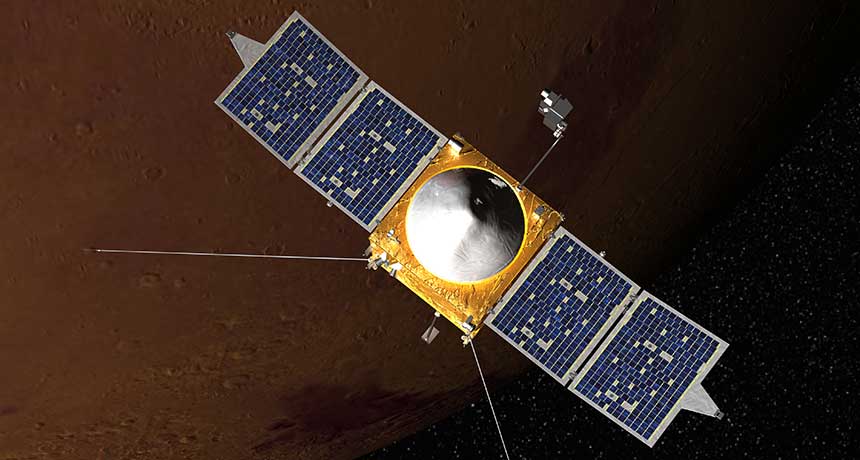Extreme gas loss dried out Mars, MAVEN data suggest

The Martian atmosphere definitely had more gas in the past.
Data from NASA’s MAVEN spacecraft indicate that the Red Planet has lost most of the gas that ever existed in its atmosphere. The results, published in the March 31 Science, are the first to quantify how much gas has been lost with time and offer clues to how Mars went from a warm, wet place to a cold, dry one.
Mars is constantly bombarded by charged particles streaming from the sun. Without a protective magnetic field to deflect this solar wind, the planet loses about 100 grams of its now thin atmosphere every second (SN: 12/12/15, p. 31). To determine how much atmosphere has been lost during the planet’s lifetime, MAVEN principal investigator Bruce Jakosky of the University of Colorado Boulder and colleagues measured and compared the abundances of two isotopes of argon at different altitudes in the Martian atmosphere. Using those measurements and an assumption about the amounts of the isotopes in the planet’s early atmosphere, the team estimates that about two-thirds of all of Mars’ argon gas has been ejected into space. Extrapolating from the argon data, the researchers also determined that the majority of carbon dioxide that the Martian atmosphere ever had also was kicked into space by the solar wind.
A thicker atmosphere filled with carbon dioxide and other greenhouse gases could have insulated early Mars and kept it warm enough for liquid water and possibly life. Losing an extreme amount of gas, as the results suggest, may explain how the planet morphed from lush and wet to barren and icy, the researchers write.